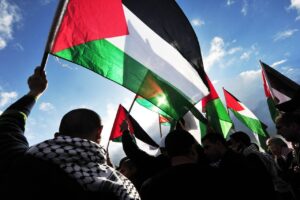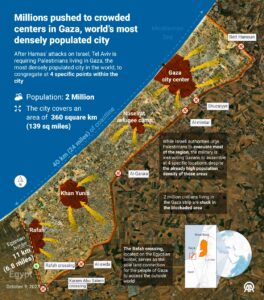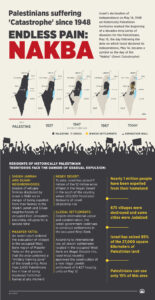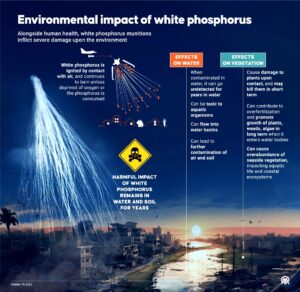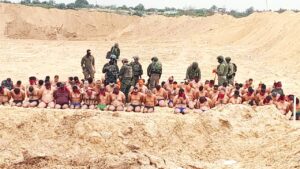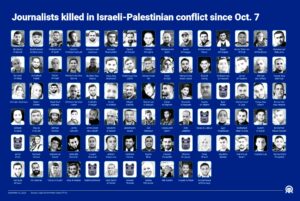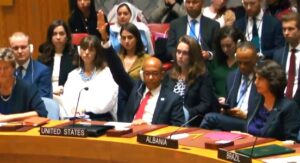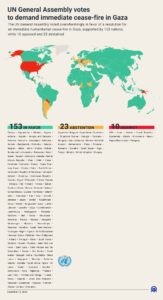2024-09-06: The International Court of Justice (ICJ) published an Advisory Legal Opinion / Avis Juridique Consultatif on 19 July 2024.
Following is an Extract from that Document … Section VII B … Paragraphs 278 & 279 … which set out, very clearly, the legal consequences for ALL OTHER MEMBER STATES of the United Nations (#UN) concerning their dealings with the State of Israel …
ALL OTHER MEMBER STATES of the United Nations are OBLIGED to comply, and without undue delay … in stark view of the State of Israel’s criminal political and military environment.
- Taking note of the resolutions of the U.N. Security Council and General Assembly, the International Court of Justice is of the view that Member States are under an obligation not to recognize any changes in the physical character or demographic composition, institutional structure or status of the territory occupied by Israel on 5 June 1967, including East Jerusalem, except as agreed by the parties through negotiations, and to distinguish in their dealings with Israel between the territory of the State of Israel and the Palestinian territory occupied since 1967. The Court considers that the duty of distinguishing dealings with Israel between its own territory and the Occupied Palestinian Territory encompasses, inter alia, the obligation to abstain from treaty relations with Israel in all cases in which it purports to act on behalf of the Occupied Palestinian Territory or a part thereof on matters concerning the Occupied Palestinian Territory or a part of its territory ; to abstain from entering into economic or trade dealings with Israel concerning the Occupied Palestinian Territory or parts thereof which may entrench its unlawful presence in the territory ; to abstain, in the establishment and maintenance of diplomatic missions in Israel, from any recognition of its illegal presence in the Occupied Palestinian Territory ; and to take steps to prevent trade or investment relations that assist in the maintenance of the illegal situation created by Israel in the Occupied Palestinian Territory (see Legal Consequences for States of the Continued Presence of South Africa in Namibia (South West Africa) notwithstanding Security Council Resolution 276 (1970), Advisory Opinion, I.C.J. Reports 1971, pp. 55-56, paras. 122, 125-127).
- Moreover, the Court considers that, in view of the character and importance of the rights and obligations involved, all States are under an obligation not to recognize as legal the situation arising from the unlawful presence of Israel in the Occupied Palestinian Territory. They are also under an obligation not to render aid or assistance in maintaining the situation created by Israel’s illegal presence in the Occupied Palestinian Territory. It is for all States, while respecting the Charter of the United Nations and International Law, to ensure that any impediment resulting from the illegal presence of Israel in the Occupied Palestinian Territory to the exercise of the Palestinian people of its right to self-determination is brought to an end. In addition, all the States Parties to the Fourth Geneva Convention have the obligation, while respecting the Charter of the United Nations and International Law, to ensure compliance by Israel with international humanitarian law as embodied in that Convention.
.
Israel’s Expanding Colonial Occupation of Palestine …

Notes …
1882 – The first Zionist Colony (Hebrew: ‘Aliyah’, the act of going up towards the holy city of Jerusalem) … Rishon LeZion … established in Ottoman Palestine by Jewish immigrants from what was then the Russian Empire (today’s Kharkiv in #Ukraine).
1916 – Long before World War I ended in 1918 … the British & French (Sykes-Picot) Agreement to carve up the Ottoman Middle East between them. Russia was excluded.
1917 – The Balfour Declaration … British Government statement of support for (‘view with favour’) the establishment of a ‘national home for the Jewish people’ … ‘it being clearly understood that nothing shall be done which may prejudice the civil and religious rights of existing non-Jewish communities in Palestine’.
1948 – #Nakba (Arabic: ‘catastrophe’) … Ethnic Cleansing / Expulsion of 750,000+ Palestinians … mass killings and violent displacement, with expropriation of lands, property and belongings … no right of return.
1967 – Arab-Israeli War (5-10 June), fought between Israel and a coalition of Arab States, primarily Egypt, Syria, Jordan … after which Israel illegally occupied: the Golan Heights in #Syria ; the West Bank including East Jerusalem in #Jordan ; the Sinai Peninsula and Gaza in #Egypt.
.
.
END
#UNcharter #InternationalLaw #UDHR #ICJ #ICC #HumanRights – #USA #UK #Germany #France #EU #Israel #CriminalState #Nakba #Apartheid #IOF #IsraelOccupationForces #WarCrimes #Genocide #Gaza #WestBank #EastJerusalem – #IndependentPalestine #BDS #SupportBDS – #LastingPeace #Sustainability #SIA #SustainabilityImpactAssessment
